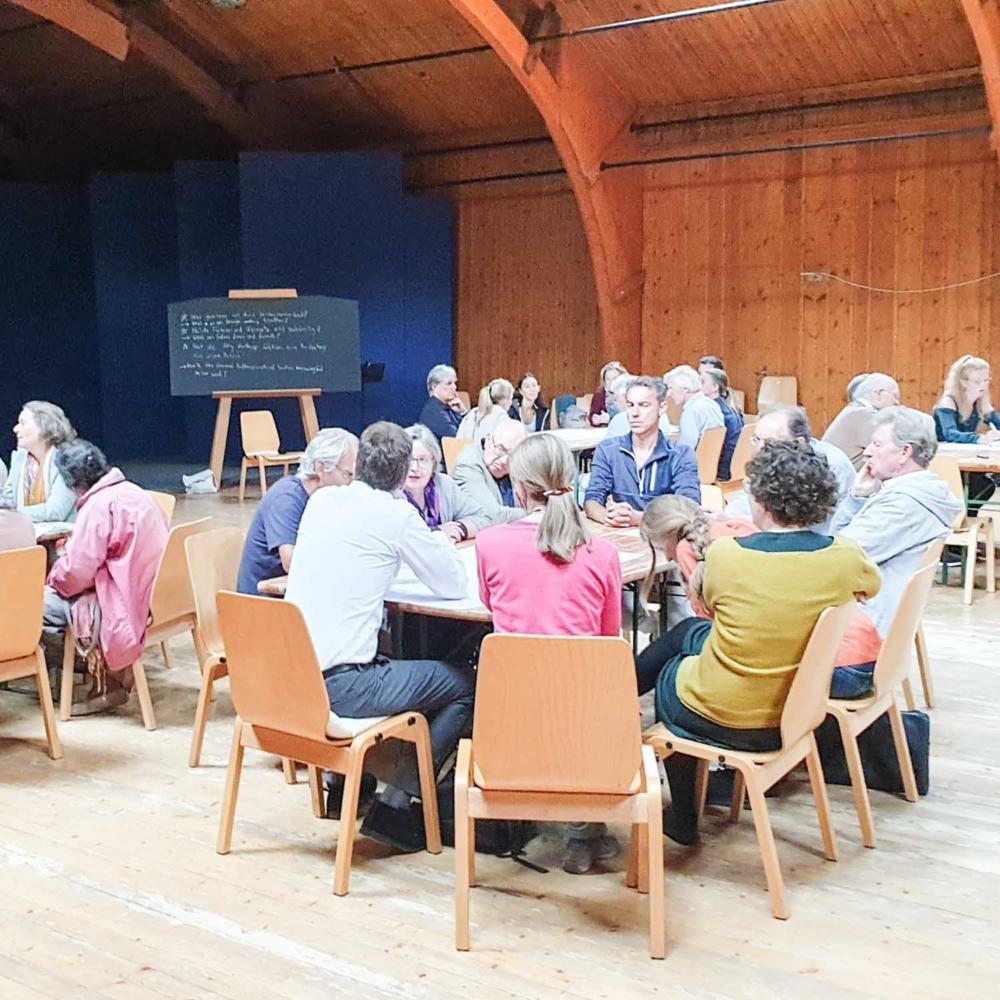Living Connections
The Living Connections colloquium took place at the Goetheanum from 8 to 11 September with 50 work group leaders and people with an interest in meditation.
Sebastian Jüngel When does withdrawing from everyday life in connection with inner work become meditation?
Claus-Peter Röh The differences experienced by the 50 people present became apparent when they described concrete exercises. One way of starting is by turning one’s outer attention inside and by asking questions such as: When am I wholly with myself? How do my thinking, feeling and will change in this state? What force is it that guides me to a state of inner calm? In a next step one lets go of what one has built up inwardly to become aware in a new way of the forces that have been moved. And finally, it is important to share one’s individual experience in an objective way. Then differences become apparent in how people experience this mysterious state. For instance: Is there a “void” when I let go of the mental image I have formed. Can I describe the state of wakeful expectation to another person who also practises meditation?
Exploring possible actions
Jüngel What possibilities for meditation are there for young parents or managers, for example?
Röh It needs inwardness. A mother of young children described that she can only meditate before her children wake up. She is too exhausted in the evenings. Later she would put a sign up at her door to warn her family that she needed this moment to herself. From this kind of practice, however short, an inner moment of strength can arise for daily life, on the one hand, and on the other the need to establish a rhythm for practice. Another person described how they withdraw to the garden, where they pay attention to the oscillation between intense nature perception and the perception of their inner response.
Jüngel Is there such a thing as an anthroposophical blue? Or to put it differently: When is meditation anthroposophical? And why should it be?
Röh There is no anthroposophical blue. There is human colour experience and there is art, which is just that. But artistic activity and meditation can be inspired by anthroposophical work. Different perspectives will then reveal themselves in the process. The spiritual aspect of the activity may become more conscious: I build up concentration and focus out of my free decision. I take with me what is going on in the world. Through this conscious act, possibilities arise of experience and action out of responsibility for other people and for the present time.
Jüngel Can you give an example?
Röh During the colloquium some participants created an artistic programme (‘Out of the Silence’) with music, eurythmy and speech. One could feel the intention for practice of that day flowing into this event that unfolded between the presenters and those who experienced it.
Self-correcting force
Jüngel There are people who exude spirituality without being connected with the anthroposophical path, not outwardly anyway.
Röh We experience a connection with many people who earnestly seek to connect with the spirit. Everyone has to find their source of inspiration for their work, for their meditation.
Jüngel Does the team that prepares Living Connections and does the leadership team of the General Anthroposophical Section work with people who have different spiritual backgrounds?
Röh Even the 50 present for this colloquium differed greatly with regard to their background and experiences. Some spent time exploring Eastern, maybe Buddhist, meditation. A conscious way of working includes that one describes one’s own experiences and shares them with others. During the colloquium it became clear that doing this in smaller settings can be fruitful. This kind of exchange becomes particularly valuable when a self-correcting force lives between the people who come together and when they learn from each other.

